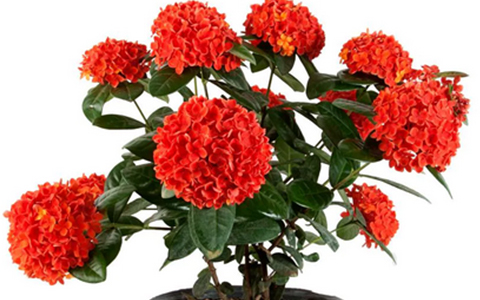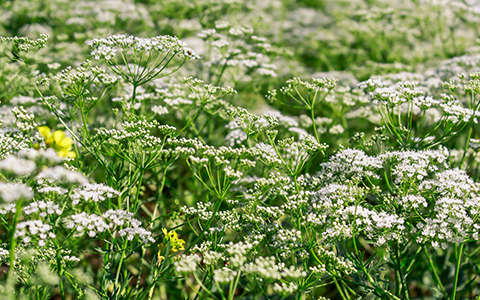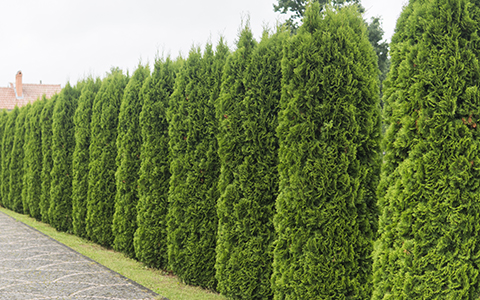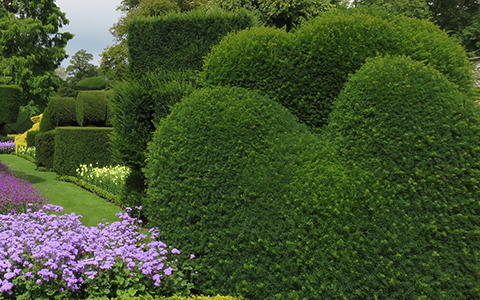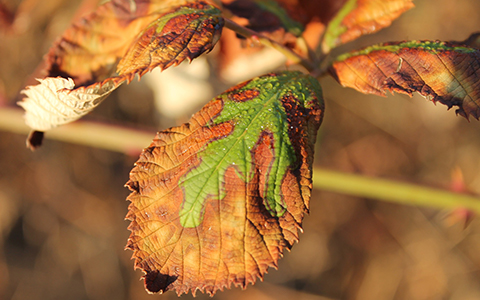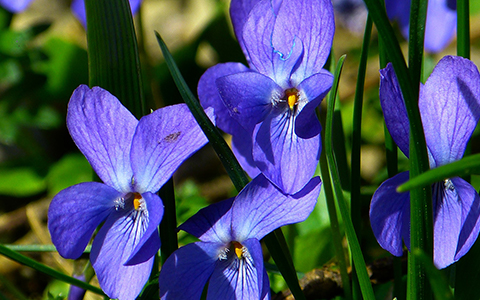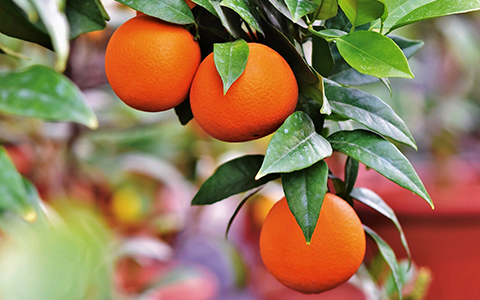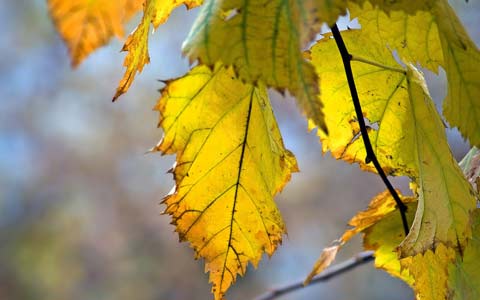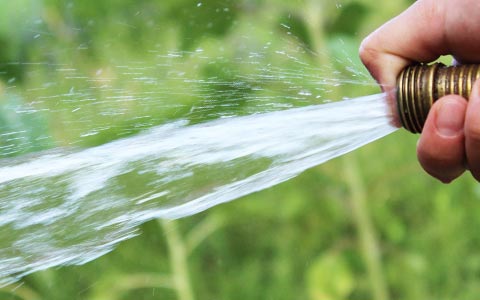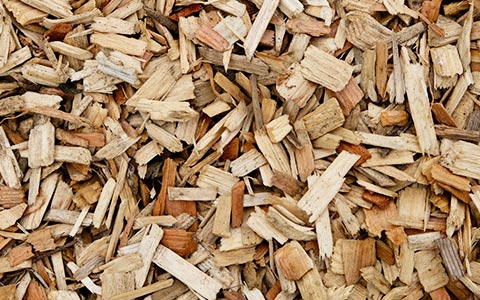Avoid having to consume pesticide filled fruits, or being limited to what you can grow because you don’t live in a tropical region. Knowing how to grow fruit trees in your home will help you eliminate unhealthy chemical consumption and enable the enjoyment of growing your own fruit.
72tree.com assembled the following growing and care information about five fruit tree species you can successfully grow indoors.
Indoor Fruit Tree Species
The following 5 fruit tree species adapt well to indoor growth without requiring any over-the-top or intensive care requirements:
1. Dwarf Meyer Lemon Trees (Citrus × meyeri)
Dwarf Meyer lemon trees are one of the most popular fruit trees to grow indoors. Like most citrus trees, this species is self-pollinating, dispensing with the need for a second tree to accomplish fertilization.
Fruit – Meyer lemon trees typically bear fruit after 2 or three years, depending on their growing environment. While the trees are self-pollinating, you can increase the crop yield by using a small paintbrush to gently spread the pollen from flower to flower when the tree is in bloom.
Soil Requirements – The most appropriate soil for growing healthy Meyer lemon trees is slightly acidic (between 5.5 and 6.5) and loam (2 parts sand to 2 parts silt to 1 part clay).
Watering – Keep the soil slightly moist without letting it dry out completely. (When watering, note that citrus trees prefer a tepid, lukewarm temperature to freezing cold.)
• Due to the salt content of your tap water, you could inadvertently end up causing marginal leaf scorch or reducing your tree’s ability to absorb water
• Citrus trees prefer ambient to lukewarm water vs. cold or freezing water
• Citrus trees like elevated amounts of moisture in the air, up to 50 percent humidity (typically the upper threshold for a home’s humidity)
• You can simulate this environment by regularly spritzing them with filtered water from a spray bottle
Growing Location – Citrus tree species need sunlight. In fact, 8 to 12 hours of it daily.
• Put your tree in the sunniest window you have, even better if it’s a room with double exposure
• If you have any outdoor space, a few weeks in summer, fresh air will serve your tree well
Note: The same care tips that apply to #1 – Dwarf Meyer Lemons also apply to #2 – Dwarf Key Limes and #3 – Dwarf Orange Trees.
2. Dwarf Key Lime Trees (Citrus aurantifolia)
Dwarf key lime trees are another popular choice for indoor fruit trees (convenient for those who enjoy making key lime pie). This species typically grows from 2 to 4-feet tall, is self-pollinating, and bears fruit within 1 to 3 years.
3. Dwarf Orange Trees (Various genus Citrus)
Several sweet orange varieties, including navel oranges(Citrus sinensis), Valencia oranges, Mandarin oranges (Citrus reticulata), and Blood oranges (Citrus sinensis ‘Moro’), can be found on dwarf rootstocks for indoor cultivation.
• These trees will grow from 6 to 12-feet tall
• They are self-pollinating, and will take anywhere from 2 to 4 years before bearing fruit
• This is significant, as orange tree varieties grown from seed can take up to 15 years before bearing fruit.
Observe these additional care tips for dwarf Meyer lemon, Key lime, and orange trees kept indoors:
• Poor drainage can kill citrus trees. They are not tolerant of standing water in any way
• Overwatering can also kill your citrus trees
• Use terra cotta pots that darken when the soil is moist and deep water your trees when the soil is dry, allowing ample saucer space for all of the excess water to run off
• Light to severe chlorosis, drooping leaves, and falling leaves are indications of a nitrogen deficiency (fertilize to compensate)
• During winter months, mist your citrus trees daily or invest in a dedicated humidifier
• Do not expose citrus trees to cold drafts. Opening a door or window for them on a cold day can stress your citrus trees (and all your other plants)
• Stressed plants are susceptible to diseases and pests
#4. Dwarf Banana Tree (Musa acuminata)
Banana trees are self-pollinating, dispensing with the need for a second tree for pollination.
Fruit – It will take 9 to 15 months before the tree starts flowering, then an additional two to six months before the bananas are ready to be picked.
Soil Requirements – An indoor dwarf banana plant needs rich, humus-like, and well-draining soil. Fertilize it monthly to keep it flourishing.
Watering – They like lots of water due to their enormous leaves, but you’ll want to let the soil dry out thoroughly between waterings. The leaves can be misted to simulate a humid climate.
Growing Location – Banana trees, like most tropical plants, need an abundance of sunlight and humidity.
• Your banana tree should get full sun for 8-12 hours per day
• A southern exposure window is ideal
• Rotate your banana plant often so that all sides are well-exposed to light
Note: Dwarf varieties, such as Dwarf Lady Finger, Super Dwarf Cavendish, or Dwarf Red are especially well suited for containers and can produce fruit much sooner than other varieties, sometimes only 8 to 10 months after planting.
#5. Dwarf Everbearing Mulberry Tree (Morus nigra)
Self-pollinating dwarf Everbearing Mulberry varieties (Morus Alba pendula, Morus serrata, and Morus australis, among others) are the easiest to grow indoors. Spring to summer blooms have these trees producing fruit continually (late spring into summer).
Fruit – Mulberry tree fruit (looks like a blackberry but slightly smaller) should be picked as soon as it ripens. This tree’s fruit supply ripens over time rather than all at once.
• Starting your tree from seeds may not be the best way to go
• It can take 4 to 10 years for your tree to mature enough to bear fruit
• However, if you take a cutting from a mature mulberry tree, the cutting will be the same age (genetically) as the parent tree
• Using cuttings, you could have berries growing in the first season.
Tip: For cuttings, remove any berries that start to grow the first season. They take energy away from the production of healthy roots. Then, once planted and established, you can harvest ripened berries.
Soil Requirements – Regular, well-drained potting soil will work just fine for this species. Mulberry trees are slow-growing and thrive in spacious pots.
Watering – Mulberry trees should receive the equivalent of 1 inch of rainwater each week for best growth and fruit production. Fruit may drop prematurely if irrigation is insufficient.
Growing Location – The more direct sunlight your mulberry plant gets, the more robust it will grow and the larger berry crop it will produce.
• Mulberries should get around 6 hours of light daily.
Indoor Fruit Trees
While searching for the perfect indoor fruit tree, there are a few things to keep in mind. Consider the following before getting your tree:
Do I have an area (by a window in my home) that gets at least 6 to 8 hrs of sunlight per day?
If yes, this lit location is where you’ll want to grow your fruit trees.
If not, your indoor fruit trees will grow best in the natural light you can give them compensated with a light fixture containing a full-spectrum bulb. These bulbs produce a balance of cool and warm light, replicating the natural solar spectrum.
Do I have a problem with elevated humidity or mold growth in my home?
If yes to either or both, use a dehumidifier to rein in your home’s humidity. Hire a professional mold removal service to clear mold from your home. This will provide healthier air for its occupants and minimize possible mold growth on your indoor plants and trees.
Note: The ideal relative humidity for health and comfort in your home is somewhere between 30-50%. Growing plants and trees indoors will potentially increase your home’s relative humidity.
Are my other indoor plants disease/pest-free?
Before investing in an indoor fruit tree, verify that your existing indoor plants are disease and pest-free. Some common diseases in houseplants include:
• Powdery Mildew
• Root Rot
• Sooty Mold
• Rust
Some common houseplant pests include:
• Thrips
• Aphids
• Spider Mites
• Scale Insects
• Mealybugs
• Fungus Gnats
Tip: Natural pesticides like neem oil or Diatomaceous Earth should be used to eradicate pests and disease from your houseplants before introducing a fruit tree in your home’s ecosystem.
Planting Indoor Fruit Trees Outdoors
When you decide to give your indoor fruit tree the boot, here’s how to plant it outdoors without killing it:
• Acclimate the tree to outside weather by leaving it outside in increasing intervals throughout spring, summer, and mid-fall (bring it in for the winter and plant it outside the following spring).
• Don’t replant it. Leave it in its pot and protect it from severe weather conditions (especially cold weather).
Note: It may not be possible to plant your indoor tree outside. If winter temperatures in your area drop to or below freezing (32°F), your tree may die if left exposed.
Tip: When you have questions about planting your indoor trees outside, or they present seemingly inexplicable signs of poor health, hire an ISA certified arborist to evaluate them and offer professional guidance.
Growing Indoor Fruit Trees
In this article, you discovered growing and care information for five indoor fruit tree species and when you can expect them to bear fruit.
Growing your own fruit trees indoors gives you a cleaner food option when they bear fruit, cleaner ambient air, and a fantastic conversation piece for friends and family.
Being unable to grow your own fruit leaves you limited and subject to consuming foods exposed to harmful chemicals.
Sources:
extension.umn.edu/house-plants/growing-citrus-indoors
edis.ifas.ufl.edu/publication/mg243
extension.illinois.edu/blogs/rhonda-ferrees-ilriverhort/2018-09-04-go-tropical-ornamental-bananas
extension.iastate.edu/news/yard-and-garden-growing-fruit-trees
This article was first published on:
http://www.72tree.com/5-best-indoor-fruit-trees/

